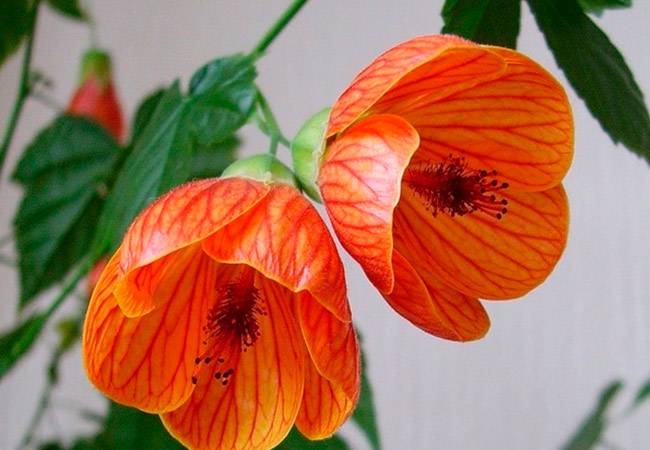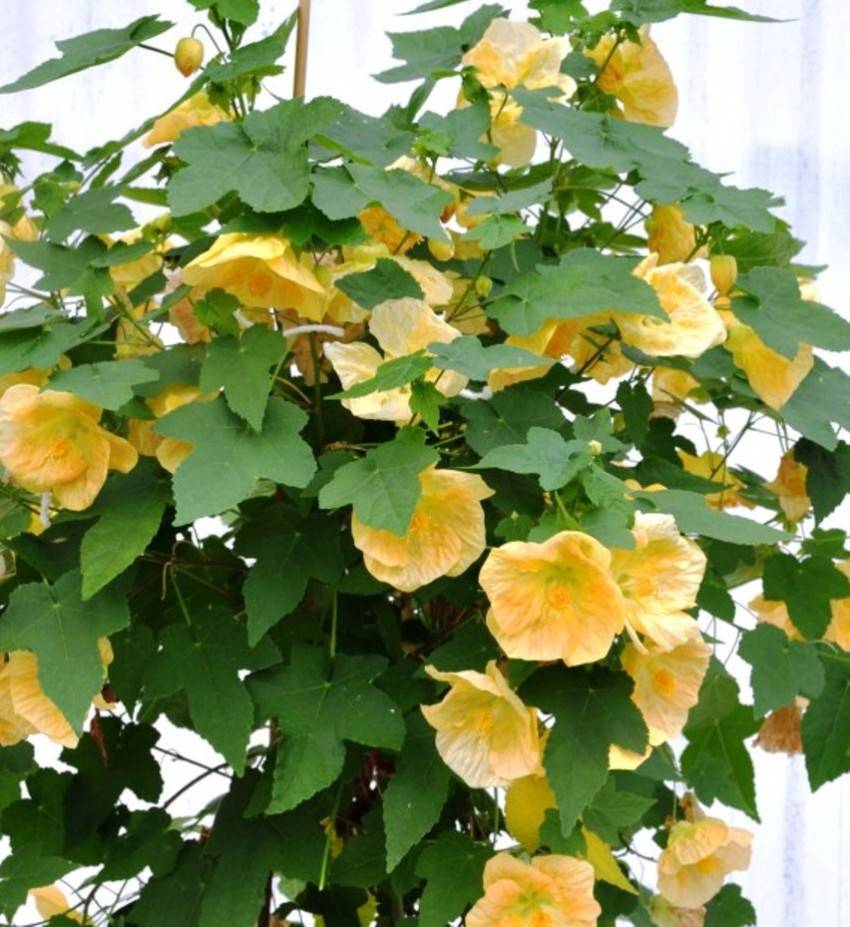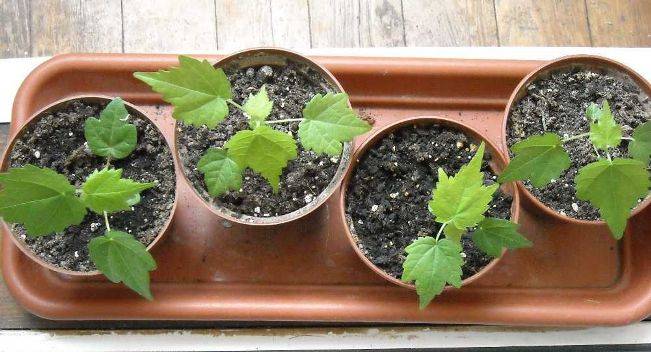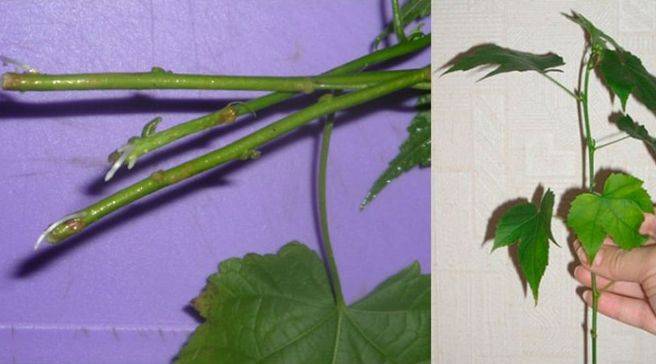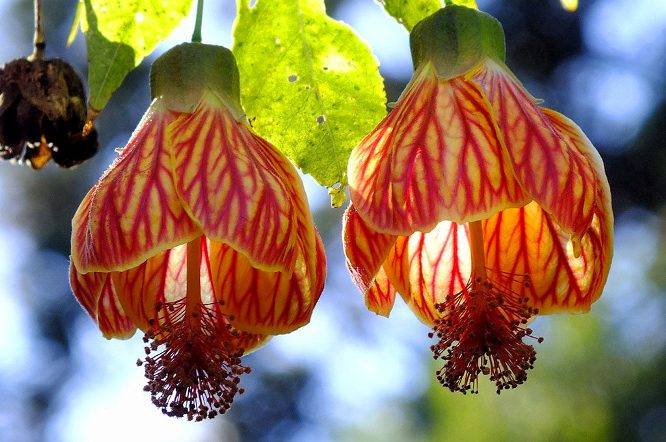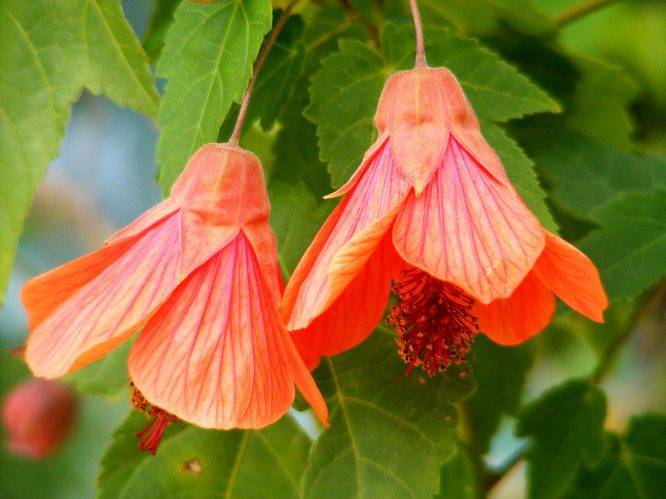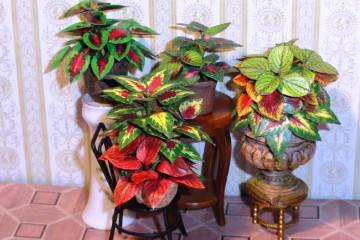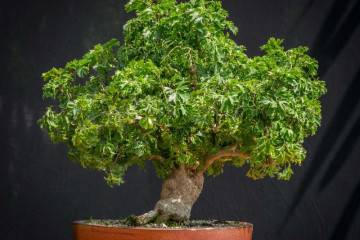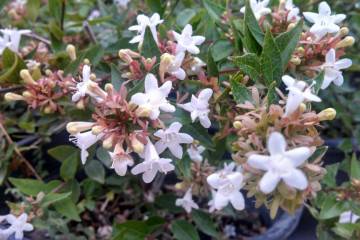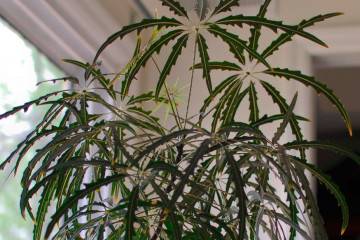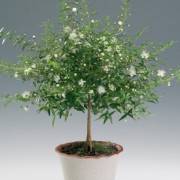Room abutilon - home care
Content:
Abutilon lovers claim that the plant has been known since ancient times. The birthplace of the flower remains a mystery. But its spread across the planet is proceeding with great speed. What attracts the attention of flower growers to indoor abutilon, how to grow it and what myths and superstitions surround the plant, it is useful to know even a simple man in the street.
What does it look like
Abutilon is a small tree with small leaves. People call abutilone indoor maple because of the similarity of their leaves. Many varieties and hybrids have been bred, but not all of them are adapted to home conditions.
The flower grows quickly. Its height ranges from 30 cm to 3 m. It blooms for months, but in winter only with proper care. There are so many tiny multi-colored bells that they resemble a lush hat against the background of green leaves.
Decorative leaf plate with curly edges. Purplish-brown stems are bristly, branched and flexible.
Abutilon: home care
At home, abutilon grows well when a familiar environment is created for it.
Temperature
Intense heat is discouraged. In spring and summer, temperatures are maintained at 20–26 ° C. In winter, 5 ° less.
Lighting
Maple blooms profusely in good light. Therefore, the best habitat is the southern windowsill. There the plant is constantly, only from the scorching sun it is covered with a protective film. But in winter, the abutilone flower needs additional lighting.
Watering
During the flowering period, abutilon needs abundant and frequent watering. On cold days with temperatures above 15 ° C, watering is normal. At low rates, they are watered 2 times less often. For irrigation, soft water is used, which is heated in winter.
Spraying
Maple prefers sparse spraying. In hot summers and during the heating season, when the temperature is high and the humidity is low, spraying is increased in order to save abutilone from death.
Humidity
The culture has a neutral attitude to moisture. But with dry air, the humidity level must be artificially increased.
Priming
The soil is chosen light and loose, allowing water and air to pass through. A substrate for indoor flowers is bought, which is enriched with sand or perlite.
You can prepare the potting soil yourself. One of three options will do:
- peat, leaf earth, sand in equal volumes;
- sand, humus, turf and leafy soil in a ratio of 2: 0.5: 1: 1;
- humus, sand, peat, leaf and sod land in equal volumes.
Top dressing
Fertilize the flower once every two weeks, but not in winter. Mineral and organic dressings alternate. Among mineral fertilizers, the most acceptable option is universal fertilizing for indoor plants.
During the growing season, maple needs phosphorus and potassium. Nitrogen is needed to form greenery. In the case of a lack of these elements, the culture turns yellow.
Features of winter care
Rules for caring for homemade maple abutilon in winter:
- adherence to room temperature 18–20 ° C;
- winter lighting (November, December);
- insulation of cold window sills with polystyrene foam;
- lack of nearby batteries, heating devices;
- mandatory rare surface loosening;
- watering in a shortened version;
- prevention of drying out of the earth clod;
- carrying out only foliar dressing in case of severe starvation.
Transfer
Abutilon painlessly transfers transplanting and transferring to other pots. But the new container shouldn't be too big. Young specimens are transplanted once a year in early spring. Mature bushes - every 2-3 years. The best transfer time is March. If it is not possible to transplant the crop, it is recommended to replace the top soil layer.
Dormant period
This state of the flower occurs in the winter. During this period, the temperature is maintained at 10-15 ° C. Watering is limited. The roots are cut in half. In the future, they will soon grow back.
When it blooms
The process begins in May and continues until mid-October. Young shoots bloom 3-5 months after planting.
But why does the abutilon plant sometimes not bloom? The reason lies in insufficient lighting or a large planting capacity.
Pruning
Without this procedure, the maple will lose its shape, stretch upwards, where abutilon flowers will appear on the tops of the shoots. To avoid sloppy growth, the bushes are cut before and after flowering by a third or half. The procedure is painless. After a few weeks, lush greenery will appear, and the pruning itself will have a beneficial effect on flowering.
How does it multiply
At home, the culture is propagated by seed, cuttings and layering.
Germinating seeds
Growing abutilone from seeds begins with selection. High-quality material is selected, which is immediately checked for germination. Then the seeds are dipped into a growth stimulator and only after that they are sown in containers with sand and peat. They deepen it by 5–8 mm, moisten the soil and cover the planting container with a lid or polyethylene. Reproduction will be successful with good lighting, regular ventilation and sufficient spraying. The temperature of the content should be between 22-28 ° C.
The first shoots are expected 20-25 days after planting. When 3-4 young leaves appear, the seedlings dive.
Rooting cuttings
Cutting is a quick way to get a new plant. Cuttings are taken from branches cut in spring processing. It is advisable to choose petioles with 3-4 buds. If the conditions are met, the roots will grow back in two weeks, and after 5-6 months the young will bloom.
Air layering
This type of reproduction for abutilon is a rare and unsuccessful phenomenon.
Possible problems
What problems arise when growing maple at home:
- sheds leaves and buds. Reasons: drafts, improper watering, sudden temperature changes;
- leaves turn pale. The reason is the lack of lighting;
- the ends of the leaves curl and dry out due to low humidity;
- yellow leaves, spots on them. The reason is lack of nutrients;
- the lower leaves fall. Due to the high temperature of the content or low humidity;
- pests. The delicate leaves of abutilone are attacked by many pests. These include scale insects, whiteflies, spider mites, aphids, etc. Weak specimens, exhausted by improper care, are especially susceptible to attacks. Insecticides and acaricides are used to control pests.
Common varieties
Many varieties of abutilone have been cultivated.Unlike wild specimens, domestic species have a compact shape and bright, long flowering. The plant is often found in landscape design. Small bushes fit beautifully into modern interiors, adorn gardens and private estates.
Among the popular varieties, the following stand out:
- Organza is a branched abutilone with a straight stem (40-60 cm), wide green leaves and multi-colored flowers;
- megapotamskiy abutilon - domestic perennial maple with a straight high stem (1–2.5 m), green oval leaves and beautiful flowers with spots at the ends;
- variegated abutilone is obtained by crossing several varieties. The stem is straight, reaching 1.5 m. Green ovoid leaves, bell-shaped buds and beautiful flowers are the decoration of the variety;
- Juliet is a tall abutilon, a hybrid shrub with year-round flowering. The variety is unpretentious to environmental conditions, including lighting;
- Bella is an abutilone with green foliage and large bell-shaped flowers of various colors. Fits well into any interior;
- hybrid abutilone is obtained by growing a mixture of bellevue from seeds. It blooms even at 5 ° C. Over the summer, it grows up to 2 m.When properly pruned, it forms a lush bush.
Medicinal properties and contraindications
Abutilon (Abutilon) - a tropical plant that does not contain toxic substances that harm humans. Certain varieties even purify air masses. Where the flower grows, there are no diseases, and the air is clean and fresh.
Signs and superstitions
It is generally accepted that abutilone heals not only the body, but also the soul. He gets rid of conflicts and quarrels. Improves mood, relieves melancholy, relieves negative thoughts.
The plant is advised to plant the elderly, which will brighten up loneliness and revive faith in life. The flower will establish contact between people of different generations living under the same roof. In offices where culture grows, people are more attentive to each other, kinder and more welcoming. Where there are red flowers of abutilone, it is warmer and more comfortable.
Is it suitable for the formation of bonsai
For these purposes, the culture is used in rare cases. Large leaves and flowers that look harmonious in indoor conditions will serve as a disadvantage for the formation of bonsai. In this case, it is difficult to maintain proportionality.
The beautiful abutilon flower does not require special attention, and it is easy to care for it. It grows quickly, blooms for a long time, reproduces successfully, cleans the air well in the house.
